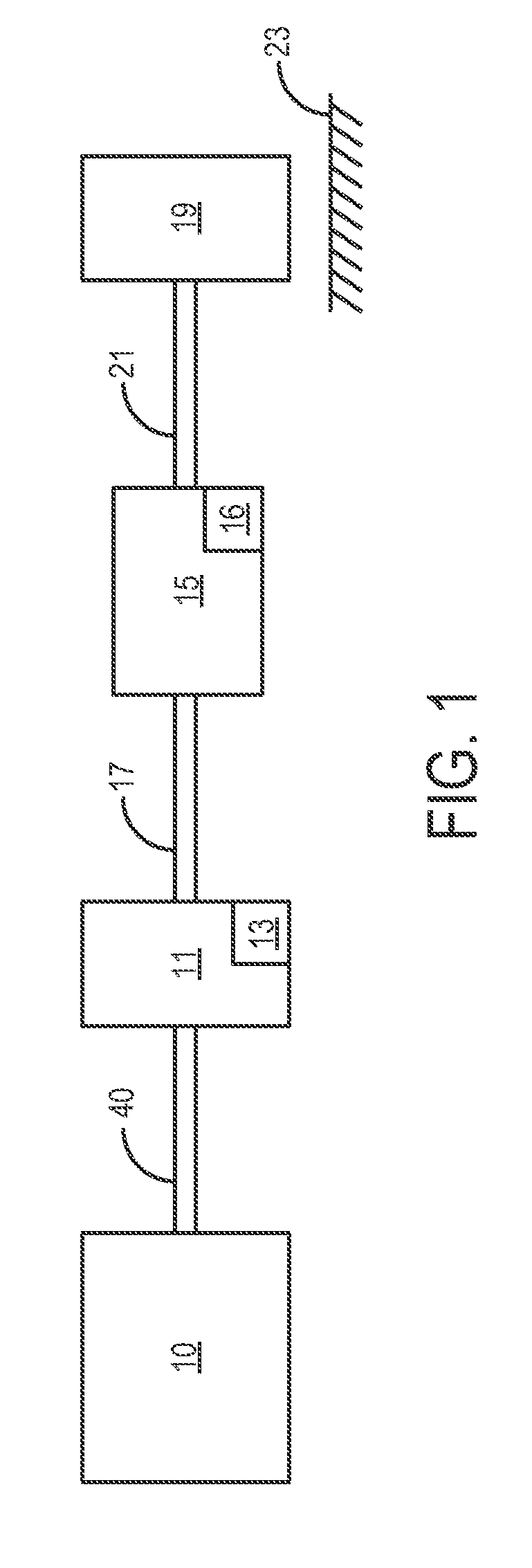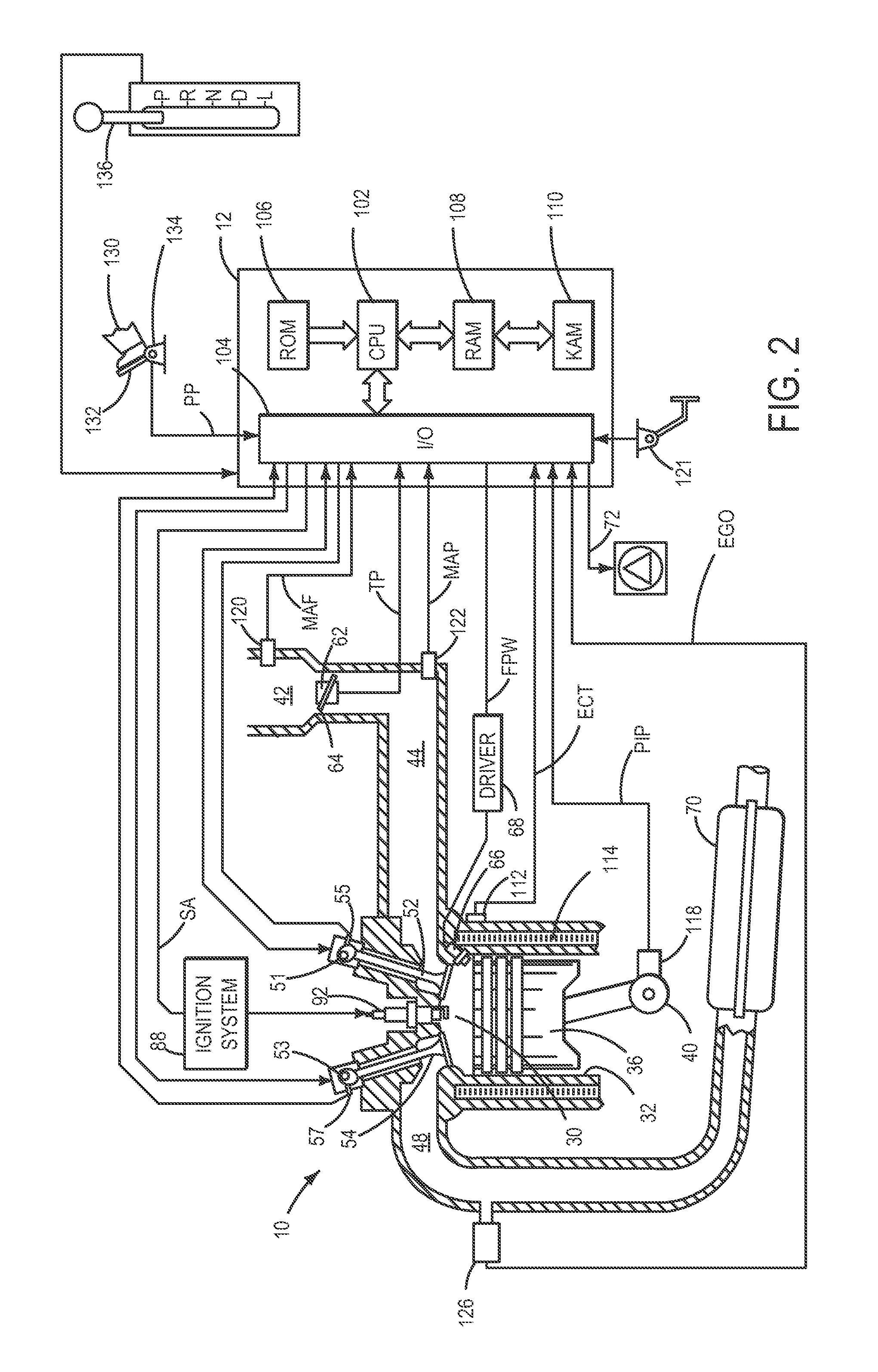Methods and systems for assisted direct start control
a technology of assisted direct start and start control, applied in electric control, gearing, road transportation, etc., can solve the problems of reducing drive feel, noise, vibration, harshness, and clunks that affect drive feel, so as to reduce noise, reduce exhaust emissions, and save fuel
- Summary
- Abstract
- Description
- Claims
- Application Information
AI Technical Summary
Benefits of technology
Problems solved by technology
Method used
Image
Examples
Embodiment Construction
[0015]The following description relates to a method for controlling an internal combustion engine coupled to a transmission and a torque converter in a motor vehicle, such as in the vehicle system of FIGS. 1-2. Each of the transmission and the torque converter may include a clutch. During vehicle coasting conditions, an engine may be turned off and allowed to spin-down to rest while the vehicle is traveling. Additionally, as elaborated in FIG. 3, a torque converter clutch may be disengaged while a transmission clutch (e.g., forward clutch) is maintained in a stroking condition by reducing the clutch pressure to a near stroke level. During a subsequent engine restart, with the torque converter clutch disengaged, the engine may be cranked with a starter while the vehicle is moving. Additionally, as elaborated in FIG. 4, a degree of engagement of the forward clutch may be adjusted based on the input and output speed of the torque converter. For example, the clutch pressure may be incre...
PUM
 Login to View More
Login to View More Abstract
Description
Claims
Application Information
 Login to View More
Login to View More - R&D
- Intellectual Property
- Life Sciences
- Materials
- Tech Scout
- Unparalleled Data Quality
- Higher Quality Content
- 60% Fewer Hallucinations
Browse by: Latest US Patents, China's latest patents, Technical Efficacy Thesaurus, Application Domain, Technology Topic, Popular Technical Reports.
© 2025 PatSnap. All rights reserved.Legal|Privacy policy|Modern Slavery Act Transparency Statement|Sitemap|About US| Contact US: help@patsnap.com



